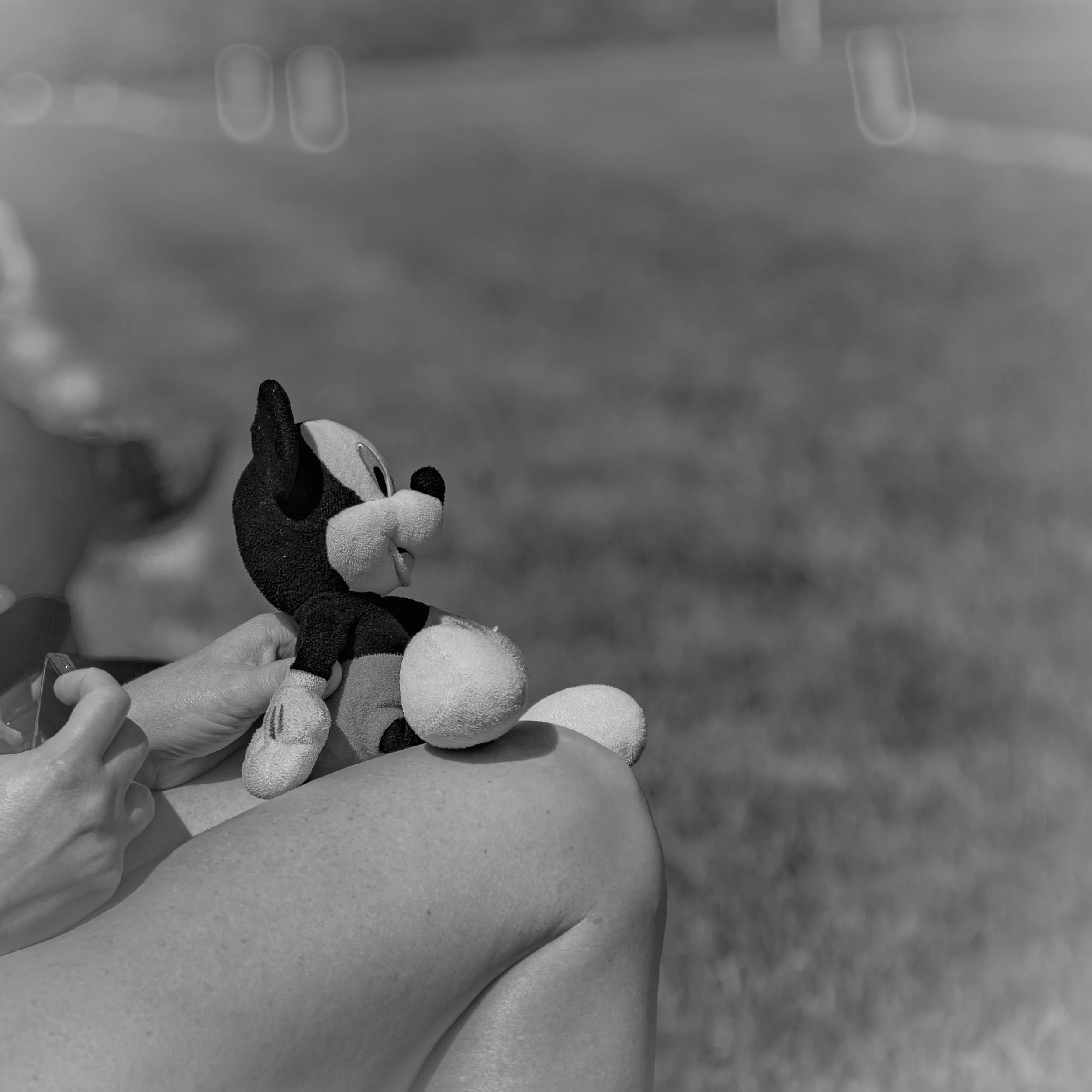“The best camera is the one that waits beside you, when the sky cracks open, or the bass jumps, or the fog rolls across the water. It doesn’t care about settings or megapixels. It just needs you to see. To pause. To remember that the story isn’t in the lens, but in the eyes behind it, the traveler who couldn’t leave without taking a piece of the light along.”
Quote: George Epley

George vs The Bug War
George was a man of the outdoors… or so he claimed. He loved hiking, camping, fishing, and sitting under the stars. At least, until the bug world declared war on him. Spiders, caterpillars, ants, even butterflies turned this rugged outdoorsman into a squealing mess. The moment one crawled within ten feet of him, George would shriek like a soprano and run faster than the Flash on an energy drink. If there happened to be a tree nearby, he’d climb it like a monkey with his tail set on fire, hanging from branches and swatting at invisible insects as though auditioning for a wildlife documentary called The World’s Most Terrified Mammal.
George tried to fight back. He went to self-help groups. He sat through psychiatric counseling sessions. He even attended a weekend retreat called Bugs Are Our Friends, where they made him hold a ladybug. The group leaders said, “See, George, harmless!” His response was to pass out cold on the spot. The ladybug flew off in triumph, no doubt bragging to its beetle buddies about how it had conquered a grown man.
Eventually, George gave up. The outdoors was simply not big enough for both him and the bug kingdom. He retreated to his house, determined to enjoy nature from the safety of his recliner. His window faced the woods. He stocked his fridge with snacks. He bought a big screen TV and tuned in to National Geographic nature films. Perfect setup, right?
Wrong.
Every time the camera zoomed in on a tarantula, George would let out a shriek that sent the neighbors calling animal control. When a butterfly flapped across the screen in slow motion, George leapt behind the couch as if it were a charging rhinoceros. Once, he tried watching a documentary about ants. Three minutes in, he sprinted out the front door, tripped over his welcome mat, and landed face-first in the yard. Ironically, he landed in an ant pile. The neighbors said his scream that day registered on the Richter scale.
And so George lives his life, trapped in a paradox: a man who loves the outdoors but is at war with its smallest citizens. His friends joke that the only safe “nature” for George is a plastic houseplant. National Geographic has quietly flagged him as a “hazardous viewer.”
As for George, he’s accepted his fate. He now prefers documentaries about outer space. “No bugs out there,” he says confidently, though one day, if NASA ever discovers alien insects, George may just place himself in a self-contained plastic bubble with life support, food, and plenty of beverages to drink till the end days.
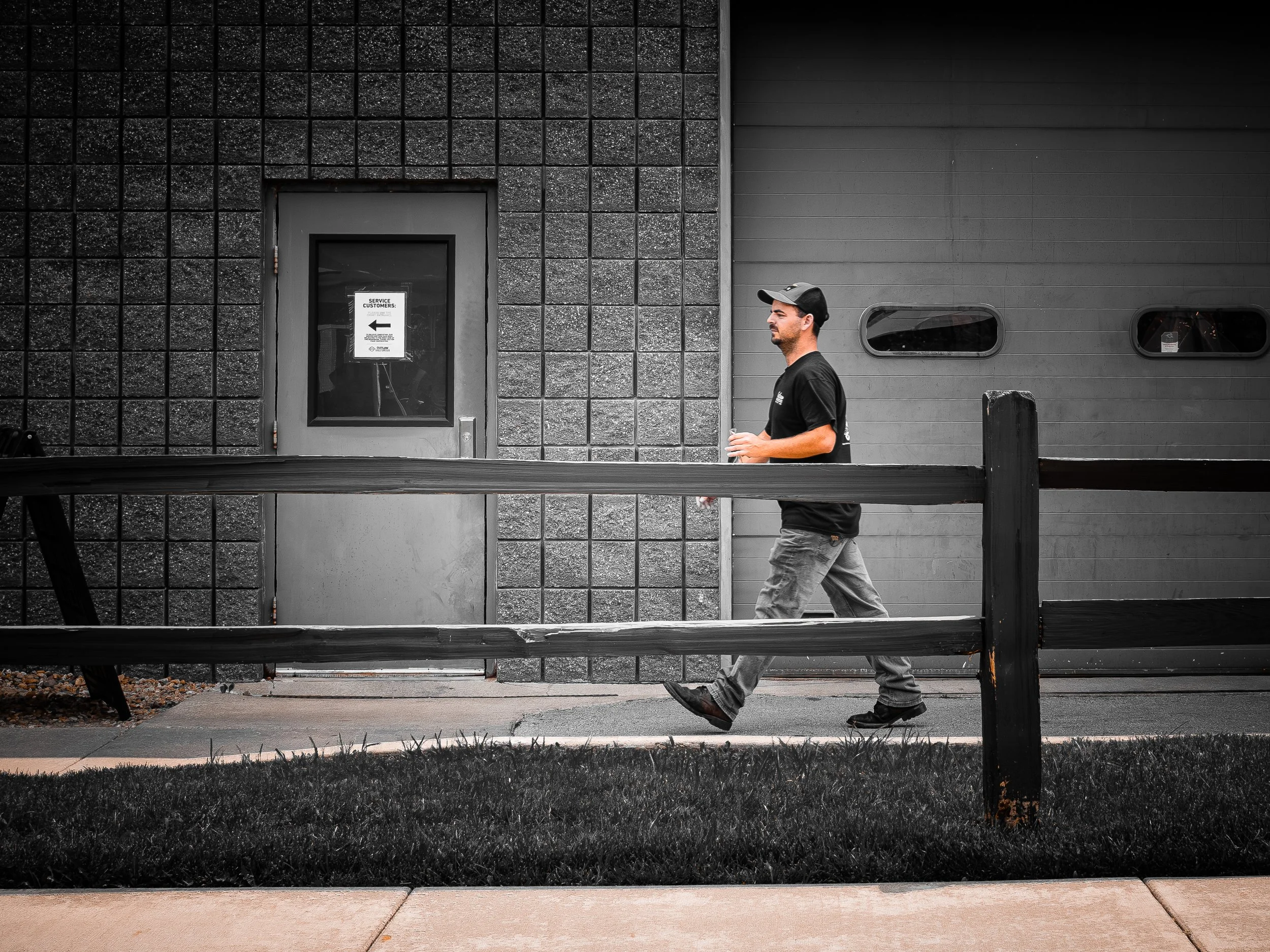
Photo Critique. Story about Street Photography
It’s late morning in an industrial district.
The air hums faintly with the sound of distant machinery. The sky above is dull and heavy, not gloomy, but quiet, the kind of light photographers dream about because it turns everything into soft gradients and muted grays.
A man walks by, not posing, not aware. Just walking. His black T-shirt, his cap, the slight forward lean of his body, all of it says purpose. You can tell he’s been here before; he knows where that door leads and how the day will unfold.
But you, the observer behind the lens, see something else. You see contrast. The block wall, cold and gray, runs in perfect symmetry behind him. The double fence rails cut across the frame, slicing the world into layers: the mundane, the human, the subtle beauty of order in chaos.
Then there’s that trick of color. The world behind him is drained of life, grayscale, metallic, almost sterile but the man himself carries the only pulse of warmth. His skin, faintly sunlit; the deep green grass at his feet; the ghost of color in his jeans. It’s as if life refuses to fade completely, no matter how industrial or mechanical the setting becomes.
Your photograph doesn’t yell its story; it breathes it.
The composition is tight, measured but not rigid. The man’s stride is captured mid-motion, one foot lifted, balance perfect. That’s the decisive moment street photographers chase: a split second where all geometry aligns with human rhythm.
If there’s one thing the image might crave, it’s a slight shift, a half-step to the left before the shutter clicked, to separate his head from the garage door’s dark edge, giving him a little more air, a little more solitude in that gray world. But maybe that overlap adds to the realism. Maybe it reminds us that real life doesn’t always frame itself cleanly.
In this photo, color becomes memory.
The man becomes movement.
The world around him becomes noise reduced to form and texture.
And that’s what street photography ultimately is a study of life in passing, of how even the most routine moment can hold rhythm, emotion, and quiet power when seen through a mindful eye.
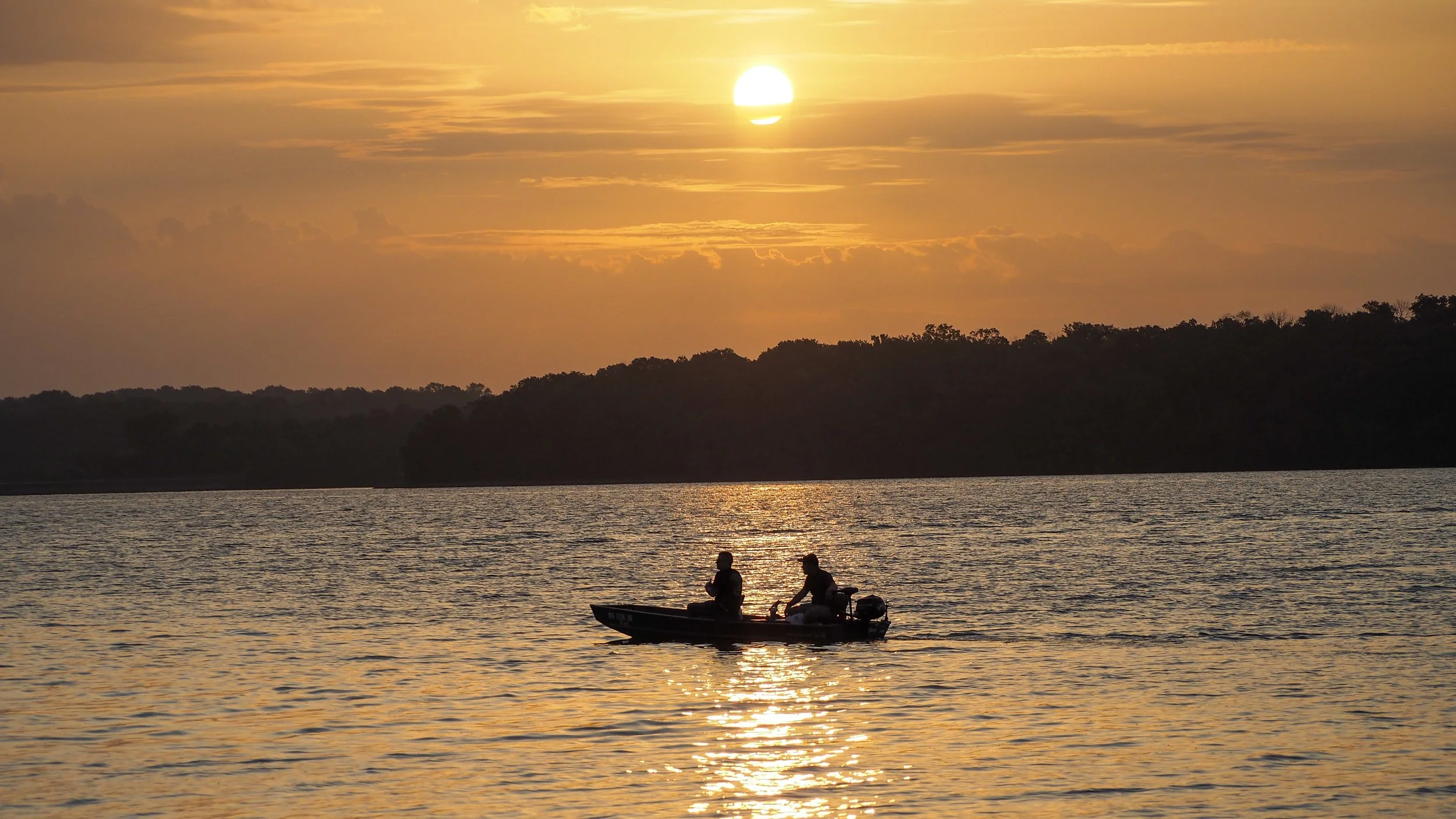
Bass and Beyond a fisherman's adventure
Out on the glassy lake, time hung like mist in the early morning air. The water shimmered in peach and lavender, painted by the brush of the rising sun. The fishing boat floated as if suspended in a dream — no ripples, no birds, not even a single bug to slap. Just silence… and the two men in the boat, staring out into the surreal, alien beauty of it all, each caught in their own mental whirlpool of disbelief.
Stan, with his jaw still sore and a half-melted worm dangling from his line, finally broke the silence.
“You know, Carl… I still can’t figure out how that goat got into the motel hot tub.”
Carl didn’t move his head, just blinked slowly like a lizard on a heat rock. “Worse part is, I think it was wearing my pants.”
A long pause. The sun crept higher, casting golden halos around their heads like saints of chaos.
Stan squinted. “You think they’re gonna charge us for the vending machine?”
Carl finally turned. “The one we set on fire, or the one you tried to baptize?”
Stan sighed. “Both.”
They sat in silence again, listening to the eerie stillness, trying not to laugh too hard in case the lake gods were watching.
The night before had been a whirlwind of bad decisions wrapped in cheese fries and mystery moonshine. The bingo hall incident. The spontaneous wrestling match with inflatable flamingos. Carl’s heroic attempt to parallel park a golf cart… in a stairwell.
Yet here they were.
Alive. Somehow unsinged. Floating in a fishing boat that shouldn’t have even been in their possession, watching the sun rise like nothing had happened.
Carl scratched his stubbly chin. “We should be dead. Exploded. Vaporized. Or at the very least, arrested.”
Stan nodded solemnly. “And yet… we fish.”
Carl reached for a thermos that probably held more regret than coffee. “Maybe it was fate.”
“Maybe it was Frank’s raccoon repellent,” Stan muttered, looking suspiciously at the odd green stain on his sleeve.
“Either way…” Carl cast his line into the mirror-slick water, “this lake don’t ask questions.”
Stan followed suit. “Good. ‘Cause I got no answers.”
The sun broke free of the horizon, pouring gold across their shoulders. The fishing boat rocked slightly. A single bass breached the surface like it was applauding them for surviving their own stupidity.
Two men. One boat. A new day. No idea how they made it there, but quietly, absurdly thankful all the same.
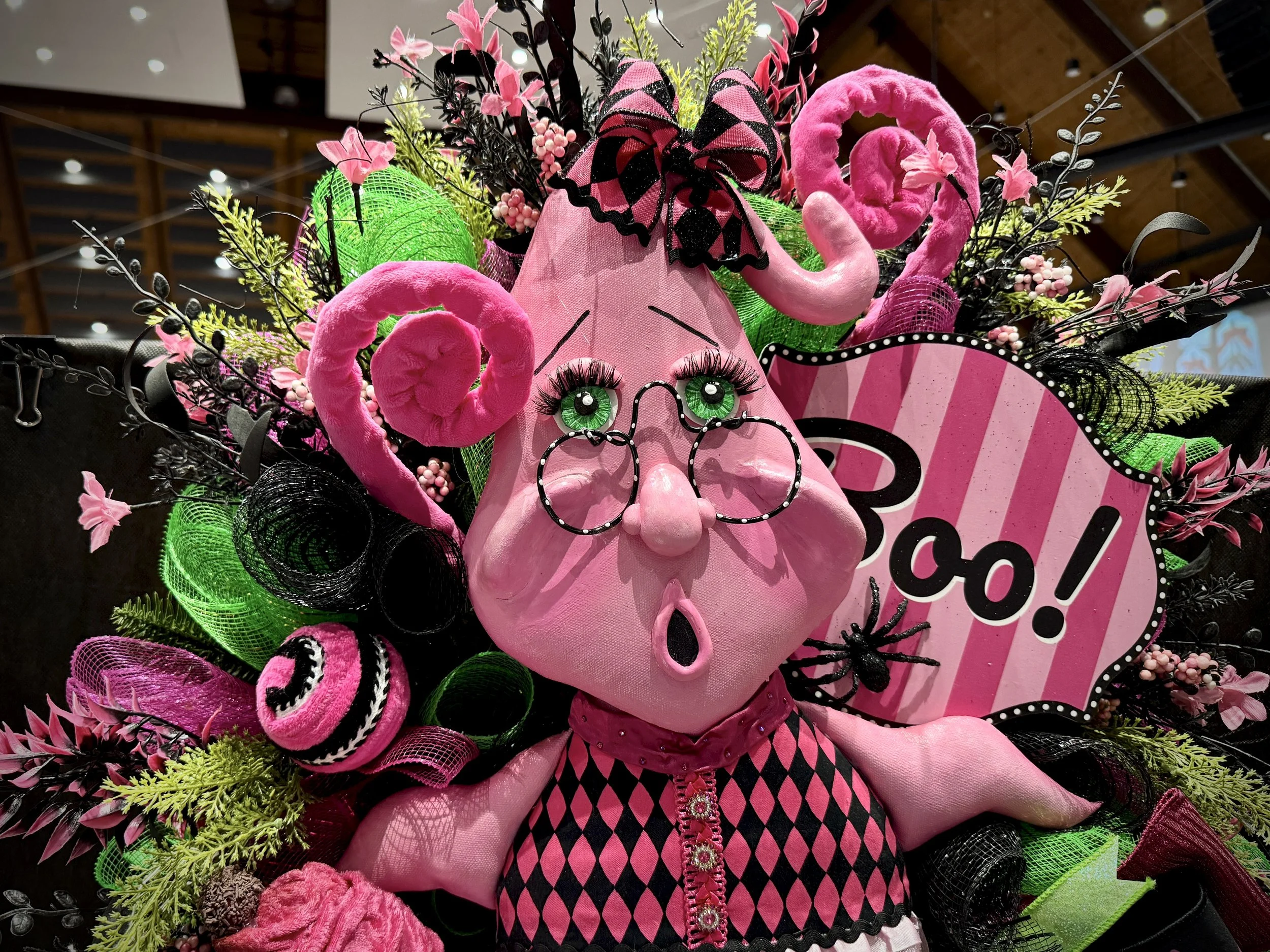
Too Much Halloween. Not for Armani Fletcher
Armani Fletcher doesn’t just like Halloween, she breathes it, dreams it, and probably bleeds orange and black. While most people pick up a pumpkin and a bag of candy each October, Armani treats Halloween like a competitive sport. Every year, she hits every art and craft show within driving distance, hunting for the next great decoration that will “complete the look” of her already overstuffed haunted empire.
Vendors at the county fairs know her by name. The moment they see that determined sparkle in her eye and the pumpkin spice latte in her hand, they brace themselves. Armani doesn’t ask for discounts. She doesn’t flinch at the price tag. If it glows, cackles, spins, or screams, she buys it. “How much?” she asks. “Three hundred.” “I’ll take two,” she says without blinking. Her friends have stopped trying to reason with her. When one of them asked, “Where are you even going to put all this?” Armani simply replied, “The bathtub’s free for now.”
By mid-October, her house becomes a landmark. Kids come from blocks away to stare in awe at the spectacle. Her yard is packed with inflatables, skeletons, cauldrons, and at least one twelve-foot witch that scares delivery drivers half to death. The lights flash, the fog rolls, and the neighborhood dogs have developed an ongoing feud with her animatronic werewolf. Her electric bill looks like it belongs to a theme park, but Armani just laughs it off. “Magic costs money,” she says.
Inside the house isn’t any calmer. The living room is a maze of motion-sensor zombies, the kitchen has glow-in-the-dark spiders on the walls, and the dining table centerpiece is a talking skull named Morty. Her husband Rick swears he’s used to it, though he recently started keeping his tools in the shed, mainly because it’s the only place that isn’t haunted.
When Halloween finally arrives, Armani stands in her yard surrounded by fog, twinkling lights, and a small crowd of impressed trick-or-treaters. She sips her coffee, surveys her glowing kingdom, and smiles with pure satisfaction. “Maybe next year I’ll go bigger,” she says. Rick groans. “There is no bigger,” he mutters, but she’s already scrolling online, looking for another twelve-foot monster or something that howls at the moon.
Because the truth is, Armani doesn’t celebrate Halloween once a year, she lives it. And if you ever drive down Maple Lane in October, you’ll know exactly which house is hers. It’s the one lighting up the night, making ghosts jealous, and proving that sometimes too much Halloween is just enough.
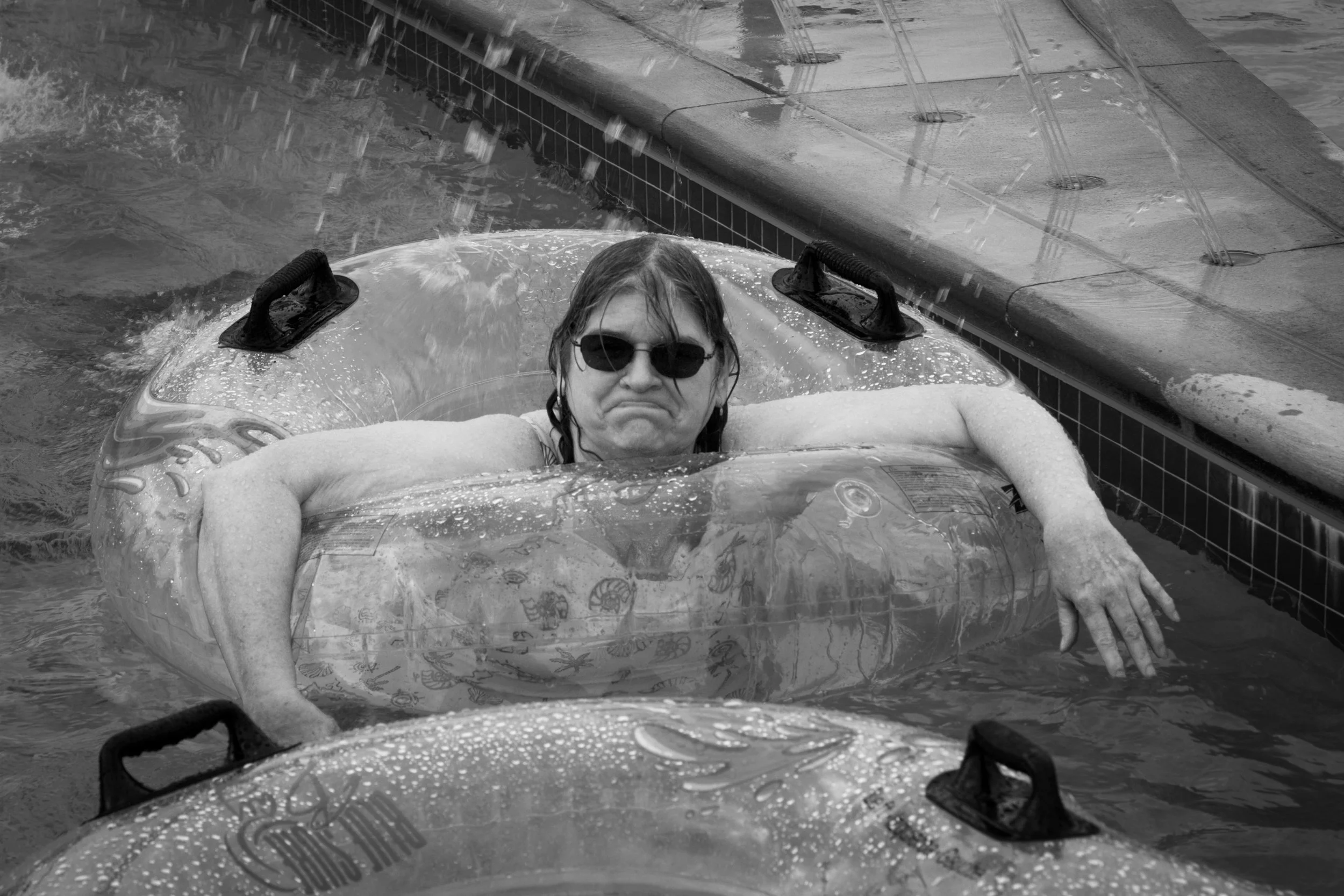
Christine and the Great Lazy River Uprising
Christine never swam laps.
She wasn’t training for the Olympics, she was training for relaxation.
Her favorite form of exercise was drifting slowly in her donut raft, eyes half-closed, one hand trailing lazily in the water like she was auditioning for a commercial about peace and quiet.
But these days, peace and quiet had gone extinct.
What used to be a calm community pool was now a “Family Splash Adventure Experience” a water park so loud it could probably be heard from orbit.
Christine still showed up, raft under her arm, determination in her flip-flops. She plopped herself into the lazy river, hoping for her usual gentle float.
Instead, the current swept her straight past Pirate Cove Splash Zone, through Mega Dump Bucket Falls, and directly under a water cannon manned by three eight-year-olds on a sugar high.
“Ma’am, that’s a high-splash area,” a teenage lifeguard called out helpfully.
Christine glared, her mascara already running down her cheeks like battle paint.
“Yeah, I figured that out, soldier,” she muttered.
She tried to relax again, but every few feet another spray, splash, or water blaster took aim. By the third lap, her hair looked like she’d wrestled a dolphin and lost.
Still, she floated on, donut deflating slightly, dignity mostly gone, but her pride intact.
“Used to be you could just float in peace,” she sighed. “Now you need a helmet and insurance.”
When she finally climbed out, dripping and heroic, she looked back at the chaos, kids cannonballing, buckets dumping, fountains firing like a naval battle and whispered,
“They can have it. I’m buying a kiddie pool and a garden hose.”
That night, she posted the photo: her on her donut raft, sunglasses on, mid-chaos.
Caption read:
“The last calm woman on the Lazy River.”
